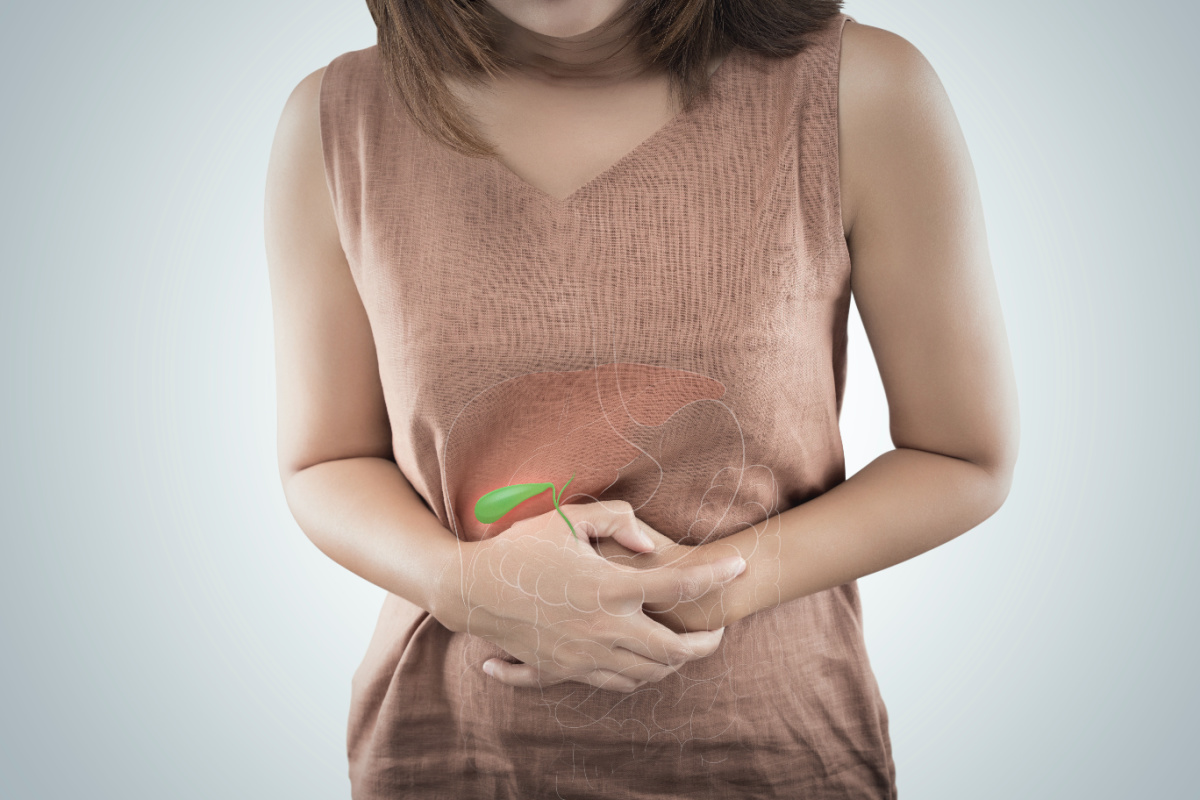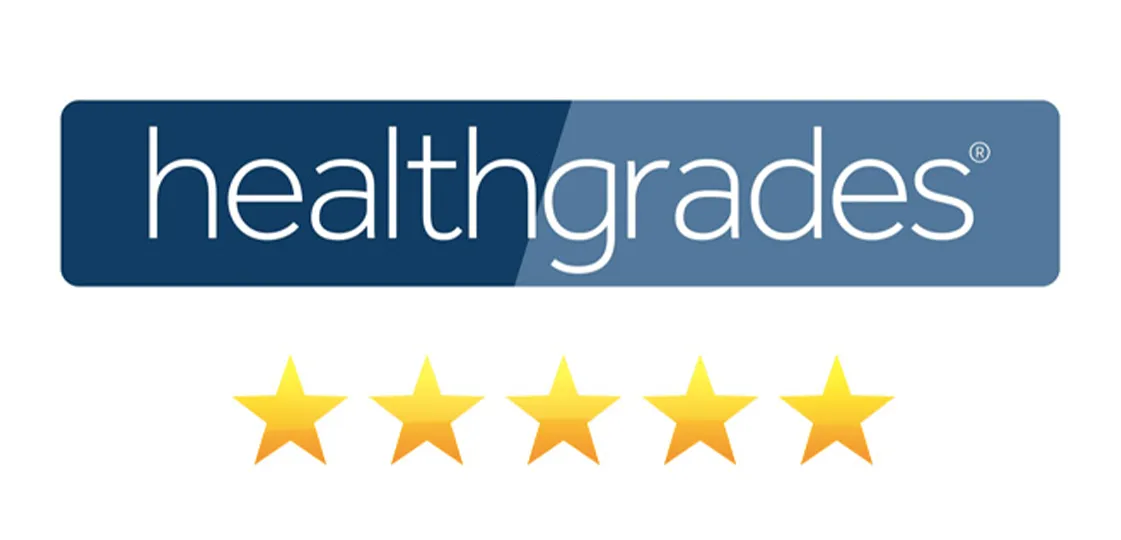A small, pear-shaped organ, the gallbladder plays a role in liver function, storing excess bile to break down fatty foods. When this organ functions improperly, it can cause discomfort and adverse health effects, at which point a patient may need surgery. Knowing the signs you need your gallbladder removed can prevent unpredictable attacks of gallstone pain, infections of the organ and bile ducts, and jaundice. Discover the signs that gallbladder removal is necessary.
Signs You Need Your Gallbladder Removed
Gallstones occur when the gallbladder is not operating efficiently, allowing bile to build up and create solid deposits. The deposits or stones can get stuck in the gallbladder or bile ducts, causing inflammation and infection.
While not every patient who experiences gallstones or gallbladder pain will need removal, this surgery, known as a cholecystectomy, is one of the most common procedures in the U.S. A person who experiences gallstones once is more likely to experience them again, so surgery is an option, especially for high-risk patients.
In addition to the risks of gallstones, other conditions can force the removal of a gallbladder. You should understand the minor and severe symptoms of gallbladder issues to prevent severe trauma or emergencies.
Common Signs of Gallbladder Problems
The first signs you need your gallbladder removed might be subtle, but they should not be ignored. People can confuse gallbladder symptoms with bloating or indigestion. Still, gallbladder pain often radiates out from a specific area and causes well-documented symptoms:
- Sharp, short-term abdominal pain: Temporary or radiating pain from the upper right of the abdomen can signal gallbladder issues. If the pain is fleeting, it may not be a concern.
- Nausea and vomiting: Gallstones are painful. The pain from the stones can cause abdominal pain and vomiting. Gallstones appearing in vomit should alert a physician to gallbladder problems.
- Indigestion, gas, bloating, or heartburn: If the gallbladder becomes blocked, bile will travel into the stomach, causing indigestion. The symptoms are like GERD.
- Low-grade fever: Medical professionals consider anything above 100.4°F a fever. An adult with a temperature between 100.4°F and 102.2°F has a low-grade fever, which does not require immediate medical attention.
- Yellowing of the skin: Gallstones and gallbladder problems can cause yellowing of the skin. Gallstones block bile flow, causing too much bilirubin in the system.
Imminent Signs Gallbladder Removal Is Necessary
Yellowing of the skin or jaundice is also a severe sign of gallbladder problems, specifically blockages of the ducts. The coloring can also indicate problems with the pancreas, and pancreatitis is a possible outcome of gallstones. Other severe signs you need your gallbladder removed include:
- Severe abdominal pain: Gallstones and gallbladder issues can cause pain and tenderness in the upper right area of the abdomen. Sometimes the pain will subside after a couple of hours, but if it lasts more than a few hours, go to the hospital.
- Breathing pain: An inflamed or irritated gallbladder may cause pain when deep breathing because the diaphragm exerts extra pressure on the liver. The liver, in turn, pushes on the gallbladder.
- Abdominal swelling: Gallstones may block bile from escaping the gallbladder, resulting in cholecystitis. The condition causes bile buildup and leads to inflammation of the gallbladder and surrounding tissues.
- Loss of appetite: When blocked, the gallbladder cannot deliver the bile to the small intestine to break down fats. As a result, you may feel full or lose your appetite.
- High fever: A high fever is among the signs you need your gallbladder removed. In an adult, a fever of 103°F or higher is high. You should seek immediate medical attention because a high fever can indicate a severe infection.
Necessary or Emergency Gallbladder Removal
If you experience any of the symptoms of gallbladder issues, talk to your doctor immediately. Avoiding necessary gallbladder surgery can cause serious complications, such as infections or worse.
If you experience abdominal pain lasting several hours, have a fever and chills, intense abdominal pain, and jaundice, emergent medical care is crucial. Avoiding treatment can cause other conditions like cancer or sepsis, meaning it is a potentially life-threatening decision.
Surgical Options
If you’re showing signs you need your gallbladder removed, your medical team may choose one of two surgical approaches: open or laparoscopic. Open surgery is not typically the primary choice because it comes with greater risks, such as blood clots, allergic reactions to anesthesia, heart problems, and blood clots. Still, open surgery might be preferential if the gallbladder is diseased and affecting other organs or surrounding tissues. Also, laparoscopic options are more challenging if the patient has had previous abdominal surgeries.
Laparoscopic surgery is the preferred method for gallbladder removal because it is minimally invasive and presents fewer risks to the patient. The smaller incisions reduce the chances of bleeding and infection and overall recovery time. Also, laparoscopic gallbladder removals only carry a 0.5% to 6% complication rate. That said, many potential issues are the same as open surgery, but the risk of any is lower.
Potential Effects of Gallbladder Surgery
The thought of any organ removal is intimidating, and people are often understandably concerned about how losing one will impact their health. However, most patients will experience no adverse effects from gallbladder removal; they can live a normal life.
That said, some patients may experience ongoing systems known as post-cholecystectomy syndrome. The condition mimics the signs of gallbladder pain — abdominal tenderness and pain accompanied by various gastrointestinal symptoms.
While the condition can arise after gallbladder removal, other unrelated problems can also cause these symptoms, including diverticulitis, gastroesophageal reflux disease, and hepatitis. Problems in the same surgical territory can also indicate strictures, retained gallstones, or cystic duct remnants. Therefore, after surgery, explaining any ongoing symptoms to your doctor is vital.
Medical Advice About the Signs You Need Your Gallbladder Removed
Experiencing the signs you need your gallbladder removed does not automatically mean you need surgery. A doctor will need to assess the underlying causes of your symptoms to understand if removal is necessary. If you are experiencing symptoms of gallbladder problems, contact Arizona Premier Surgery to schedule an appointment.
—————————————-
Sources:
https://www.ncbi.nlm.nih.gov/books/NBK448176/
https://www.niddk.nih.gov/health-information/digestive-diseases/gallstones/definition-facts
https://www.medicalnewstoday.com/articles/signs-you-need-your-gallbladder-removed
https://www.healthline.com/health/gallbladder-removal-laparoscopic
https://www.healthline.com/health/gallbladder-removal-open
https://www.goodrx.com/conditions/gallstones/signs-you-need-your-gall-bladder-removed
https://www.mayoclinic.org/diseases-conditions/gallstones/symptoms-causes/syc-20354214
https://www.medicalnewstoday.com/articles/gerd-and-gallbladder
https://www.ncbi.nlm.nih.gov/pmc/articles/PMC3645219/
https://thesurgicalclinics.com/symptoms-gallbladder-attack/
https://www.mayoclinic.org/diseases-conditions/cholecystitis/symptoms-causes/syc-20364867




